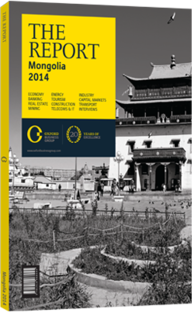Fortuitous geography: New high-speed international bandwidth
Mongolia’s fibre-optic infrastructure is widely regarded as among the best in the region in terms of reach, capacity and speed. As of the end of July 2013 the country’s five fibre-optic cable networks together totalled 18,343 km in length, according to data from ErdemNet, a local internet service provider (ISP). Gemnet, a private operator, controls the great majority of this capacity, though much of the country’s physical network infrastructure is owned by the government. At the same time, Mongolia’s proximity to Russia and China means that the country is well situated in terms of potential international bandwidth connectivity. Indeed, as a result of new cross-border links with fibre operators in China, Russia and further afield, Mongolia’s total network capacity increased by more than 700% between 2009 and the end of 2012, according to statistics from the Information Technology, Post and Telecoms Authority (ITPTA), the state-run entity responsible for overseeing ICT development in the country.
Data Infrastructure
Mongolia’s total bandwidth reached 30 gigabits per second (Gbps) in 2012, up from 17.2 Gbps in 2011, 11.2 Gbps in 2010 and 3.7 Gbps in 2009, according to ITPTA statistics. According to ErdemNet figures, Information Communication Network (Netcom), a government-owned firm, is charged with managing the state’s 7876-km fibre-optic network. Railcom, a subsidiary of Mongolian Railway, the state-owned national rail transport firm, oversees a 1405.5-km fibre-optic network in Mongolia, running alongside the nation’s major north-south rail link. Gemnet owns 1199 km of fibre, and also leases much of the government’s and Railcom’s fibre capacity, which it sells on to local ISPs, mobile telecommunications firms and other consumer-orientated companies. Two of Mongolia’s four mobile operators also run their own fibre-optic networks. MobiCom, which boasts more than 42% of Mongolian mobile subscribers as customers, has 5062.8 km of fibre nationwide, while Skynetworks, which is affiliated with Skytel, the county’s third-largest mobile operator, manages a 2800-km network.
Gemnet, the largest bandwidth wholesaler in Mongolia, has overseen a considerable percentage of the country’s total internet capacity. “We have more than 90% of market share in terms of providing internet connectivity to domestic clients,” U. Dolguun, the company’s CEO, told OBG. Gemnet has signed data transit deals with a variety of major network players around the world, including Russia’s TransTelecom, China Telecom, and the US-based firm Level 3, the latter of which currently operates one of the world’s largest internet protocol transit networks.
New Markets
As of late 2013 Gemnet was in the final stages of a deal with its partners in Russia and China, which would allow the firm to route international data traffic through Mongolia, which is in fact the most direct route between Europe and East Asia. The deal has the potential to boost Mongolia’s financial profile within the region. “Trading in all the world’s financial centres is carried out entirely via high-speed software these days,” said Dolguun. “In these competitive markets the difference between a trade that takes 10 milliseconds to make its way from London to Hong Kong and one that takes 15 milliseconds is potentially millions of dollars.” Linking China and Russia via Mongolia could speed up trading between financial centres in Asia and Europe by 30 milliseconds or more, according to Gemnet’s estimates. Provided Gemnet’s plan moves forward as expected, Mongolia’s ICT industry might well benefit from a considerable amount of financial sector-related investment in the coming years, as banks and securities brokerage firms take advantage of the nation’s prime location between the world’s largest financial centres in East Asia and Europe.
Dolguun has remained optimistic about the country’s future as a regional internet transit hub. “There is a great opportunity to develop this country as a regional data centre location,” he told OBG. “There is a lot of land and more than enough power. Not many people are needed to support this industry – only shelves and computers. Plus, the connectivity is already in place.”
You have reached the limit of premium articles you can view for free.
Choose from the options below to purchase print or digital editions of our Reports. You can also purchase a website subscription giving you unlimited access to all of our Reports online for 12 months.
If you have already purchased this Report or have a website subscription, please login to continue.

